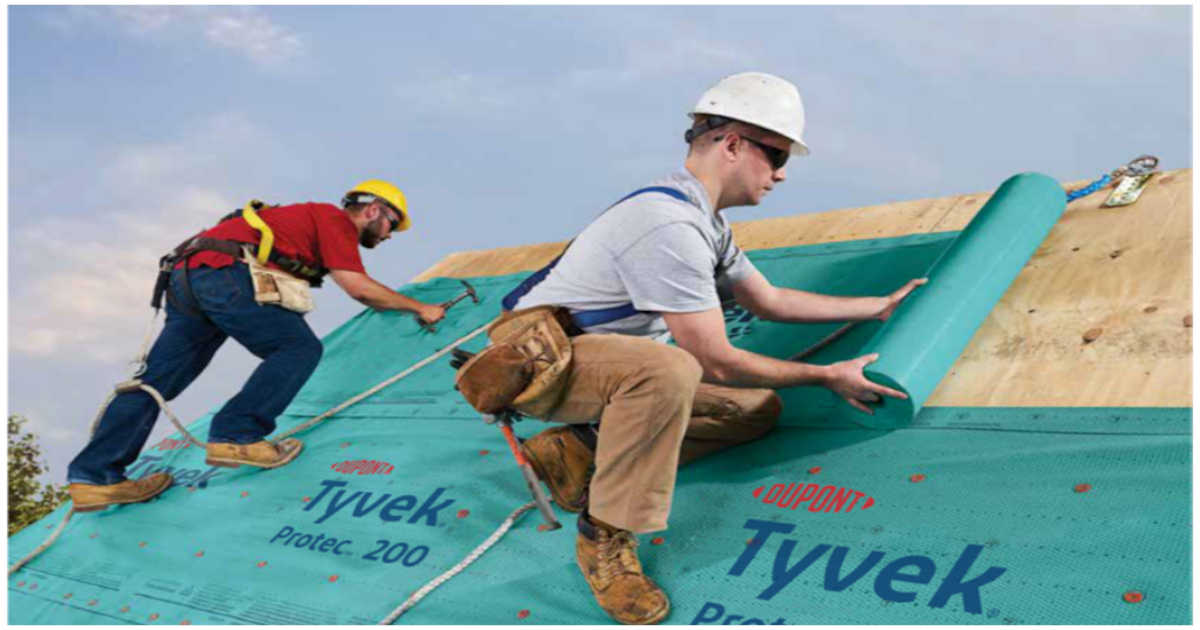Synthetic Underlayment vs. Felt Roofing - Which One to Choose?
Posted by Steven on September 16, 2025

Why Roofing Underlayment Is Essential for Roof Protection
Roofing underlayment provides an essential layer of protection from the elements, including rain, snow, and wind. Without it, water can rot the roof deck, leading to mold, leaks, and structural damage. Neglecting underlayment increases the need for repairs and shortens the lifespan of your roof.
Types of Roofing Underlayment: Synthetic vs. Felt
The two most common types of roofing underlayment are felt and synthetic.
Synthetic underlayment is typically made from woven or spun polyethylene or polypropylene, materials known for their strength, durability, and resistance to moisture and UV exposure. These engineered plastics give synthetic underlayment its lightweight yet tough characteristics, making it ideal for modern roofing applications.
In contrast, felt underlayment is composed of organic or fiberglass materials that are saturated with asphalt. This traditional material has been used for decades and provides a degree of water resistance and cushioning, but it is generally heavier, more prone to tearing, and less durable than synthetic alternatives.
Because they're made from different materials, they each come with their advantages and disadvantages. This guide will help you decide which type of underlayment is best for your project.
Is Felt for Roofing Right for Your Project?
Advantages of Using Felt Roofing Underlayment
- Affordability: Felt is considerably cheaper than synthetic, making it a good option if you're on a tight budget.
- Practical for Some Projects: Suitable for less demanding applications, such as patio covers or reroofing over existing shingles with functioning underlayment.
- Water-Resistant: Felt provides a basic level of water resistance.
- Widely Available: Since it's been the standard for years, it's easy to find and works well with shingle roofing.
Disadvantages of Felt Roofing Underlayment
- Shorter Lifespan: Felt deteriorates faster than synthetic, with warranties usually lasting 15-20 years, similar to the lifespan of asphalt shingles.
- Vulnerable to Heat: Asphalt, a petroleum-based product, breaks down in high temperatures. Prolonged heat exposure can dry out the felt, causing it to crack and degrade.
- Poor UV Resistance: Felt underlayment doesn't hold up well against sunlight. It may show signs of damage within 24 hours, depending on the asphalt content.
- May Require a Slip Sheet: To prevent sticking or damage from metal roofing panels, a slip sheet (a layer of building paper) may be needed.
- Fire Risk: Felt is more flammable than synthetic underlayment. Although it's treated with UV-degraded mineral granules for some fire resistance, it's still petroleum-based and slower to ignite, but not fireproof.
- Heavier and Less Efficient: Available in 15-pound (#15) and 30-pound (#30) rolls per 100 sq. ft., felt is heavier and comes in smaller rolls, which means more seams and more labor. It is also less environmentally friendly and harder to recycle.
Pros and Cons of Using Synthetic Roof Underlayment
Pros of Synthetic Roofing Underlayment
- Longevity: Synthetic underlayment lasts significantly longer than felt. Most manufacturers claim it can last as long as a metal roof, up to 40 years or more, and usually comes with a longer warranty.
- Weather Resistance: It withstands prolonged exposure to UV rays and moisture, making it ideal if there will be delays in finishing your roof.
- Heat Resistance: Synthetic underlayment repels heat and stays cooler to the touch, which makes installation safer and easier for contractors, especially in hot climates like deserts or tropical areas.
- Larger Rolls: Synthetic typically comes in larger rolls (around 1,000 sq. ft. per roll compared to 200-400 sq. ft. for felt), reducing the number of seams.
- Lightweight and Slip-Resistant: Weighing 2 to 4 pounds per square, it's easier to handle and safer to walk on due to its slip-resistant surface.
- Wrinkle-Resistant: Unlike felt, synthetic doesn't wrinkle when exposed to moisture, sunlight, or temperature changes.
- Fire-Resistance: Most synthetic underlayments have a Class A fire rating, offering the highest level of fire resistance when used with a Class A roof system.
Cons of Synthetic Roofing Underlayment
- Cost: Synthetic underlayment is often more expensive, two to five times the price of felt roofing.
- Permeability: It has a low permeability rating, meaning less water and air can pass through. While this improves water resistance, it can trap moisture if the system isn't installed correctly. Proper attic and roof ventilation is essential.
Final Thoughts: Which Roofing Underlayment Is Better?
The best underlayment depends on your budget, roofing type, climate, and fire-resistance requirements. Choose synthetic if you want durability, better weather resistance, and a longer-lasting roof. It's ideal for metal roofs or areas with harsh climates. Choose felt if you're looking for a budget-friendly option for simpler roofing jobs, especially when reroofing over shingles.
Tip: Always check your local building codes. Some areas require specific underlayment types depending on climate, slope, or roofing material.